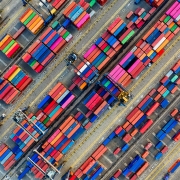What is the role of multinational corporations in the global economy?
Topic of Study [For H2 History Students]:
Paper 1: Understanding the Global Economy (1945-2000)
Section B: Essay Writing
Theme II Chapter 1: Reasons for growth of the global economy
What are multinational corporations?
By definition, a multinational corporation (MNC) is a company that operates businesses in two or more countries. In contrast with corporations that operate strictly in their country of origin, MNCs expand their scale of operations to other countries. In the post-WWII period, the United States took the lead in establishing MNCs based in different parts of the world, such as Western Europe and Japan.
The Post-War Years
In the 1950s and 1960s, the United States contributed to nearly half of the world’s manufacturing output. American MNCs made their way to host countries like Great Britain, facilitating the transfer of technology and technical know-how. In return, host countries benefited from job creation and improvement of living standards.
By 1966 US multinationals accounted for more than 80 per cent of sewing machines, typewriters, and color film, more than 60 per cent of the calculating machines, razor blades, breakfast cereals, and spark plugs, and more than 50 per cent of the automobiles made in Britain. More than 80 per cent of the computers sold in West Germany and Italy were produced by American multinationals.
An excerpt from “Transnational Corporations and the Global Economy” by Richard Kozul-Wright and Robert Rowthorn.
The meteoric rise of Western Europe and Japan: New competitors
With the continued American support, economies in Western Europe and Japan recovered quickly. MNCs from these two parts of the world began to secure a foothold in the international landscape. By the 1980s, the American firms acknowledged the remarkable feats of their innovative counterparts in Europe and Japan.
In the 1970s, Japanese electronic multinationals moved their investments into Asia, exporting popular consumer electronics like televisions. Host countries like Singapore, Hong Kong and Taiwan benefited from the influx of Foreign Direct Investment (FDI). Similarly, Japanese automakers have gained global recognition due to its fuel-efficiency, even challenging the dominance of veteran American companies like General Motors and Ford.
The oil shocks of 1973 and 1979 increased the demand for more fuel-efficient cars, and the Japanese were well-positioned to capture an initial portion of the U.S. market. The ensuing growth during the 1980’s of foreign competition in the domestic market marked several significant transformations of the domestic automobile industry. Japanese producers priced their automobiles very competitively and consumers placed increasing emphasis on product quality and value in their purchase decisions. By 1990, Japanese firms had captured 33 percent of all U.S. car sales; European firms 5 percent; and Korean companies, 2 percent.
An excerpt from “Monthly Labour Review” by the U.S. Government Printing Office, 1992.
Vehicles of foreign investment and international trade
In addition to the role of governments in advanced economies driving the growth of the world economy, MNCs support FDI flows to accelerate the economic development of different countries. In the 1960s, Third World nations attracted nearly half of the entire world’s FDI. However, the proportion of FDI in developing countries has declined to nearly one-third by the 1970s.
An increasing proportion of world trade occurs within transnational corporations, that is, from one branch or plant of a corporation to another branch in a different country. In 1970, more than a quarter of US manufactured exports were sold by multinational corporations to a majority-owned foreign affiliate.
… Almost all foreign direct investment originates in the developed world. In 1978, the USA alone provided 41.4% of the total stock of accumulated foreign direct investment; Japan 6.8%; and Canada 3.5%. A mere 3.2% derived from developing countries.
An excerpt from “The Golden Age Illusion: Rethinking Postwar Capitalism” by Michael John Webber.
What can we learn from this article?
Consider the following question:
– Assess the view that the multinational corporations were necessary in advancing the growth of the global economy after the Second World War.
Join our JC History Tuition to learn more about this enriching topic. The H2 and H1 History Tuition feature online discussion and writing practices to enhance your knowledge application skills. Get useful study notes and clarify your doubts on the subject with the tutor. You can also follow our Telegram Channel to get useful updates.
We have other JC tuition classes, such as JC Math Tuition and JC Chemistry Tuition. For Secondary Tuition, we provide Secondary English Tuition, Secondary Math tuition, Secondary Chemistry Tuition, Social Studies Tuition, Geography, History Tuition and Secondary Economics Tuition. For Primary Tuition, we have Primary English, Math and Science Tuition. Call 9658 5789 to find out more.











